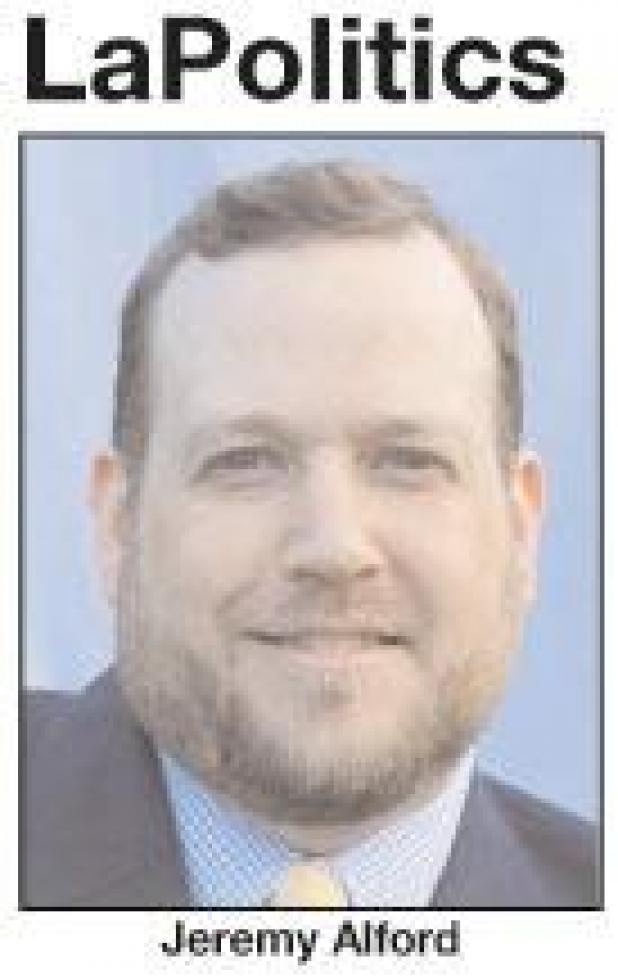
Louisiana Politics: 50% plus one is a whole new thing for JBE
No matter what kind of politician you might be, regardless of your war chest or name recognition, winning in the first round is the easiest way to go, aside from escaping opposition altogether.
But if you’re Gov. John Bel Edwards or one of his top handlers, winning in the primary during a year like this one takes on a whole different tone.
That’s because some boosters and consultants for the incumbent believe it will be easier for Edwards to lock down victory on the first ballot than on a second, which at this point seems to hold as much mystery for Democrats as an Agatha Christie novel.
The formula for winning this way is simple enough — 50% of the vote plus one point. Notch that and you get a governorship, and it certainly appears to be the goal for Team JBE.
Can Edwards pull it off?
Well, for starters, Edwards is facing eight opponents on the October ballot, including Congressman Ralph Abraham, businessman Eddie Rispone and six lower-tier contenders that some politicos might describe as “also-rans.”
(For our purposes, an also-ran candidate hold no major office, suffers from barely existent name recognition and has not poured significant personal wealth into a bid.)
Going back to the 1983 governor’s race, an also-ran candidate has on average captured .46 points per primary showing, or 6,600 votes. Plugging that into the 2019 gubernatorial primary, the also rans should at least knock 3 points or 40,000 votes off of the table.
That also-ran tally, however, is likely to be much higher this fall. Each instance of an incumbent re-election bid for the past 36 years has resulted in a notable spike of vote shares for also-ran candidates.
In 1995, when former Gov. Mike Foster was elected, also-rans shared in .11 percent of the vote, or 5,100 individual votes. In 1999, those figures jumped to .57 percent and 7,000 votes, respectively.
In 2007, when Foster’s protege former Gov. Bobby Jindal was selected, also-rans soaked up 3,000 votes, not even enough to register a full percentage point. When Foster sought re-election four years later, also-rans accounted for 2.1 percent, or 21,000 votes. (That was a seven-fold increase.)
The average overall increase for also-rans during incumbent re-election bids is roughly 1.3 points, meaning the lower-tier candidates this cycle could take as many as 5 percentage points or more from the front of the field.
Now factor in the number of new chronic voters that have emerged over the last few cycles and include those disillusioned voters who stayed home in 2015.
If you blend those trends with the candidacy of Metairie’s Gary Landrieu, and whatever confusion that might create for Democrats, and the presence of a black Democrat from Hammond named Omar Dantzler, the also-ran sum for 2019 could be knocking on as much as 7 percent.
Could the total reach even higher? It’s always possible. In 2011, eight also-rans carved 17 points off of Jindal.
And that’s among the fears for pro-JBE politicos. If the weight of the also rans comes courtesy of the Republican frontrunners, then Edwards would have cause to cheer.
But more than likely the also-rans will be floated at a cost to the governor, since he’s the huge vote piñata in the field and all of his opponents are carrying sticks.
Abraham and Rispone, meanwhile, are less susceptible to losing votes to also-rans. They’re upstart challengers in nearly every sense, but there are candidacy models from (fairly) recent election cycles those campaigns can review.
Abraham’s bid has at least four primary models that can be reviewed, consisting of gubernatorial candidates from north Louisiana that either served in Congress or other high-ranking offices, including the following:
--Foster Campbell, 2007, 12 percent, 161,665 votes
--Randy Ewing, 2003, 9 percent, 123,936 votes
--Clyde Holloway, 1991, 5 percent, 82,683 votes
--Buddy Roemer, 1987, 33 percent, 516,128 votes
--Average: 14.75 percent, 221,103 votes)
Rispone’s bid, meanwhile, has just as many historic reference points to dive into, consisting of independently minded businessmen who weren’t afraid to spend their own loot, including these:
--Walter Boasso, 2007, 17 percent, 226,476 votes
--John Georges, 2007, 14 percent, 186,682 votes
--Phil Preis, 1999, 2 percent, 23,445 votes
--Phil Preis, 1995, 9 percent, 133,271 votes
--(Average 10.5 percent, 142,468 votes)
On the surface, based on these amateur models and absolutely nothing else, Abraham could be looking at a primary share of about 15 percent and Rispone roughly 11 percent.
But those averages don’t take into account the mood of the electorate here in Louisiana (seemingly Trumpish), bank accounts (Rispone is keeping pace with Edwards), the emergence of super PACs (arrived in 2015) and a variety of other factors.
A handful of political professionals surveyed by LaPolitics this week expect both Abraham and Rispone to perform better than 15 percent and 11 percent, respectively.
Those of us who kind of — sort of — know math should know those predictions would have both Abraham and Rispone performing above historic norms, should their candidacy models developed for this story prove to be a good match.
So, 50% plus one? Sure, it’s possible. But it won’t be easy.
For more Louisiana political news, visit www. LaPolitics.com or follow Alford on Twitter ia @LaPoliticsNow
